Blue
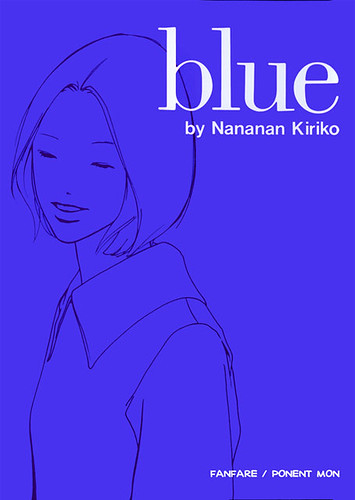
The reason most reviews (of anything—movies, books, in this case comics) tend to be positive is that there’s very little reason to warn readers off consuming something they probably never would have heard of anyway. That, in large part, is why I haven’t done a comics review in a while. I’ve been buying and reading comics, but mostly I haven’t liked them.
I bought blue a while ago and decided to review it today for a few reasons: 1) I haven’t done a review in a long time. 2) I haven’t done any reviews of work by women yet. 3) It fits one of my pet theories about literature, namely, that you get a better ratio of quality to crap if you stick to works originally written in other languages. They have to be at least pretty good to warrant translating.
In doing some background Web reading I learned that the author, Kiriko Nananan, is part of a new, women’s movement in manga called “la nouvelle manga,” which apparently aims to combine Japanese experimentation in storytelling with French/Belgian experimentation in style and design.
Nananan’s storytelling is experimental only in that it comes from a solid, realist tradition, and that it’s very good. A young, introverted girl at an all-girls school falls in love with one of her classmates, who eventually leaves her and goes back to her married boyfriend in Tokyo. In fact, it’s the story’s very lack of experimentation that makes it work. Sometimes you can get away with just being talented.
The design is more unusual, though: spare, varied, making great use of white space. To crib a little from another review.
On the bottom two-thirds of page 39 we see Masami lying down in her bed. In the first panel (this manga is in its original right-to-left format, so it is the upper right one) she is raised up on her elbows. As our eye drops down to the next panel, so does Masami drop down to hide her head in her arms. The way her figure in this panel bleeds into the gutter and then the next (tall) panel, creates a sense of time passing, without even needing a second image (that rectangular panel creates the effect). Notice also the ash on the end of the cigarette has grown from beginning to end.
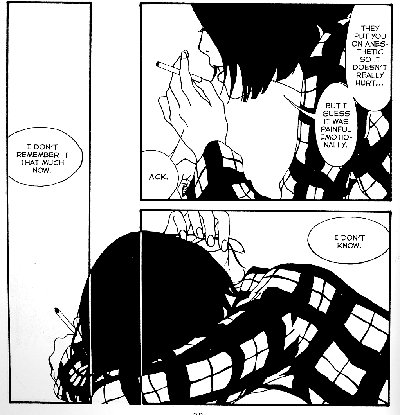
The one problem with all this elegance is that it actually becomes fairly difficult to distinguish the girls, who all wear the same school uniforms. Nananan draws their features with so few lines, using only black and white, that you have to pay very careful attention to small differences.
The book has been out for a while in Japan (long enough for them to have made a movie of it, kind of the Japanese Ghost World) but it’s just getting wider distribution in America. More previews below.
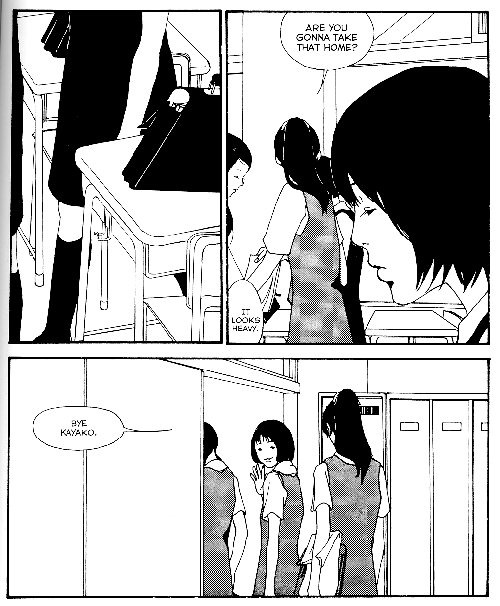
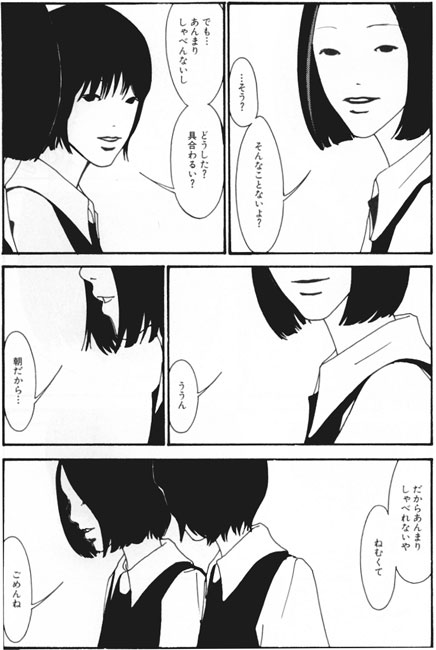
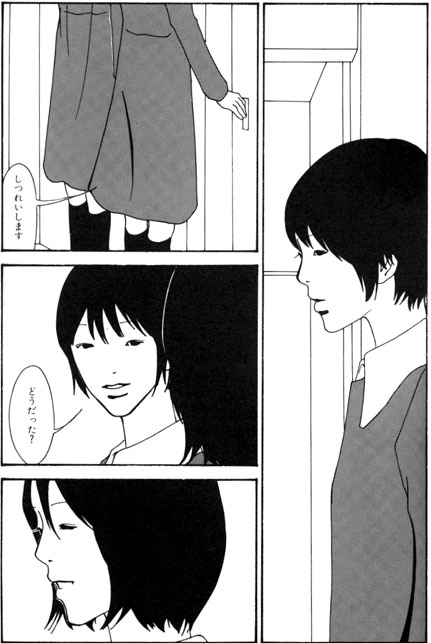
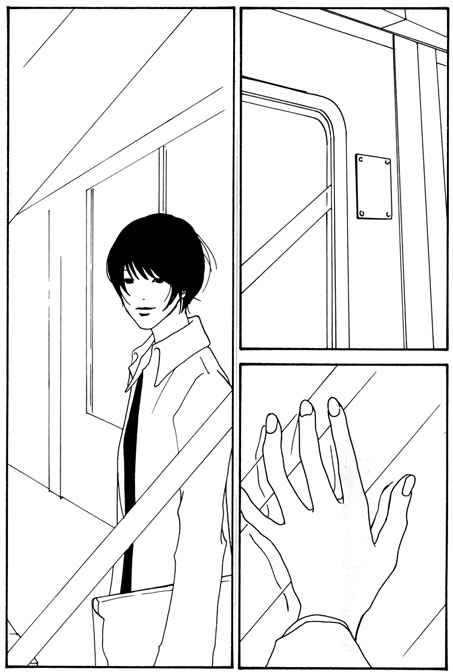




0 Comments:
Post a Comment
<< Home